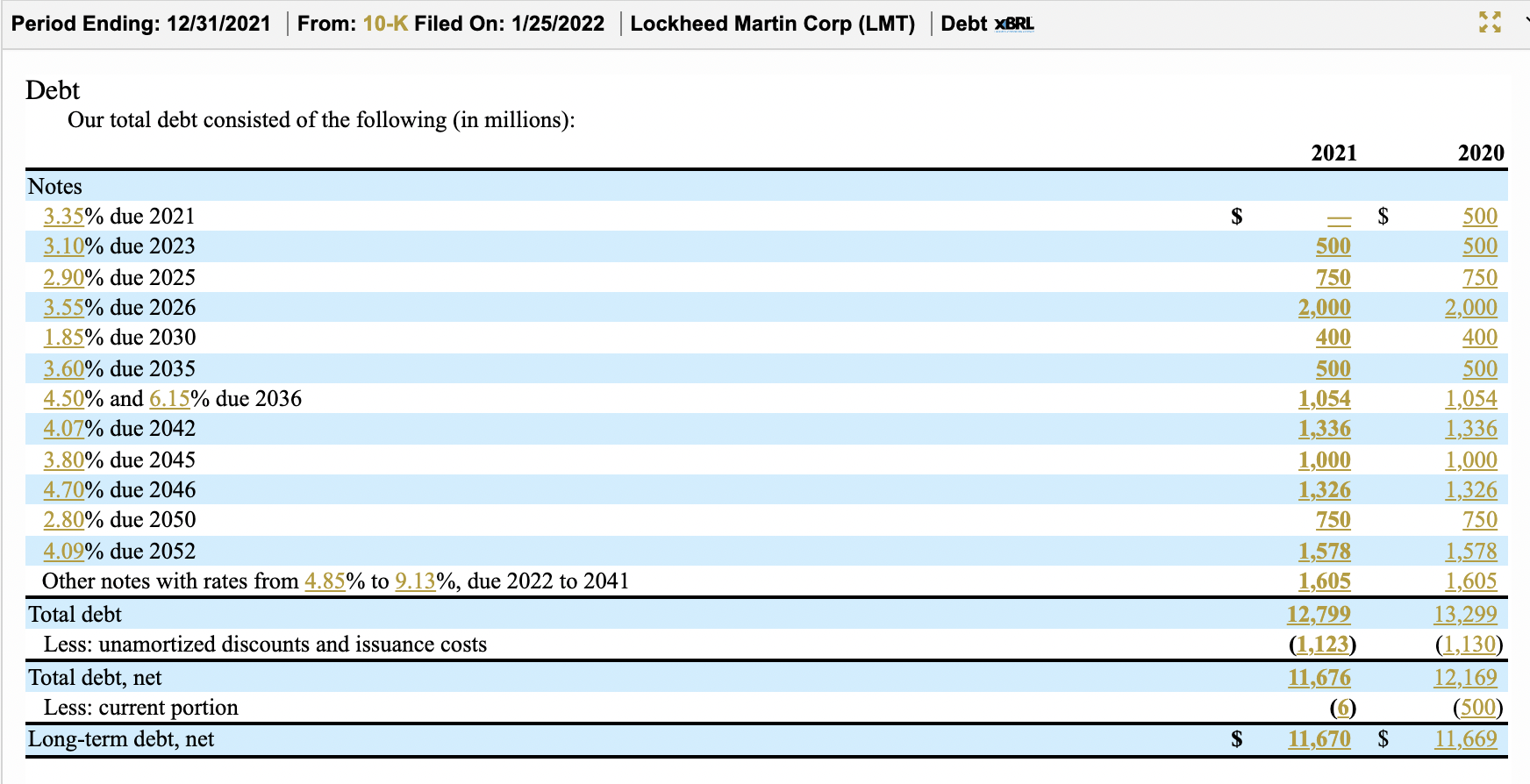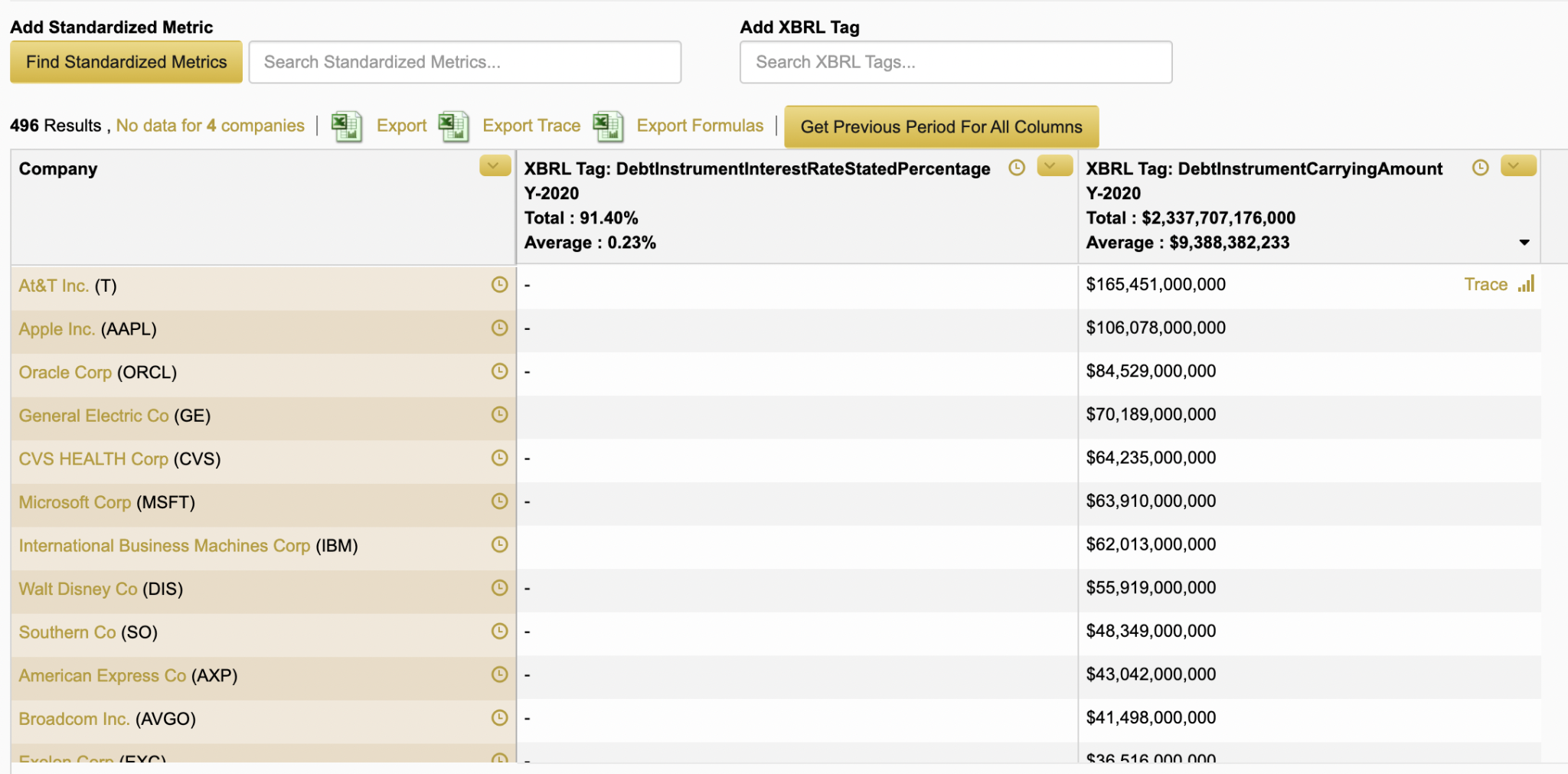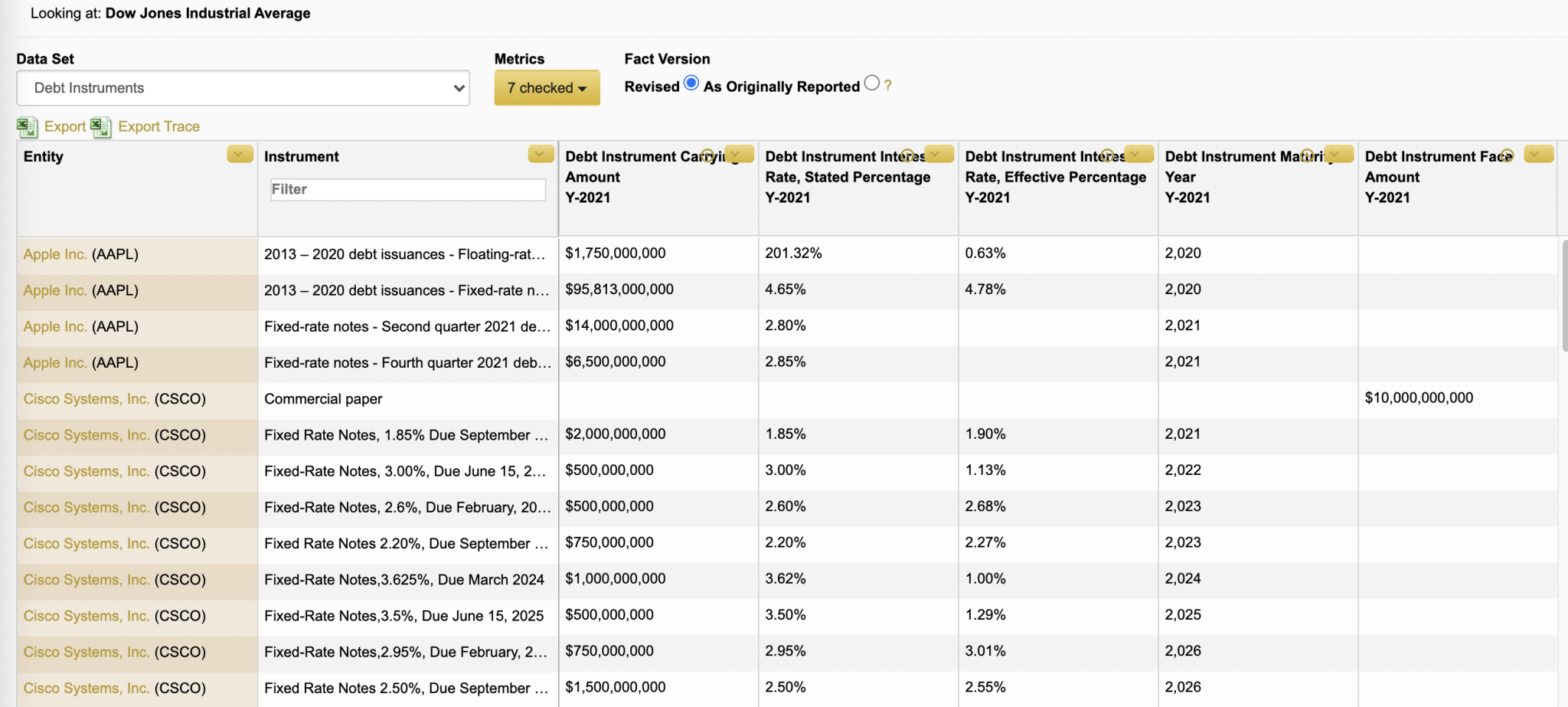Since everybody in the financial markets is waiting these days for the Federal Reserve to begin raising interest rates (probably at its next meeting in March), today let’s look at the various ways that Calcbench subscribers can research firms’ disclosures about debt levels and interest rates — so you can have a better understanding of which firms might suffer what consequences from those rate hikes.
The best place to begin is with our Interactive Disclosures database, where you can find detailed information about individual firms’ specific debt loads. Almost all firms make disclosures about debt levels, and you can find those by selecting “Debt” from the pull-down menu on the left side of your screen. In fact, you’ll often see those disclosures readily available, grouped into short- and long-term borrowings.
Figure 1, below, shows a typical example from Lockheed Martin ($LMT). We picked Lockheed at random, only because the company filed its 2021 annual report this week. When we went to the debt disclosures, we found this gorgeous table of notes payable.

Right away we can see that Lockheed is paying 3.1 percent on $500 million due in 2023. Well, numerous Wall Street observers have been saying lately that the Fed will raise interest rates several times by then. So one might reasonably ask Lockheed during an earnings call whether it has any concerns about future debt financings that might happen in 2023 or beyond, when those halcyon days of interest rates near 3 percent may well be long gone.
Debt Disclosures in Bulk
While we’re staring at Figure 1, notice that all those interest rates and debt amounts are active hyperlinks. If you move your cursor over them, you can find the exact XBRL tag that Lockheed used to file those disclosures — and you can also use those tags on our Multi-Company database, to search for similar disclosures across large groups of firms.
For example, the XBRL tag for the interest rates is “DebtInstrumentInterestRateStatedPercentage.” The tag for the debt amounts is “DebtInstrumentCarryingAmount.” (Never have we claimed that XBRL tags are especially sexy or stylish.)
If you take those tags and search the S&P 500 on our Multi-Company page, you see something like Figure 2, below.

The tags can be pasted into the search field labeled Add XBRL Tag. You could also enter a large number of other debt-related terms in the Standardized Metrics field immediately to the left of the XBRL field. For example, start typing in “Debt” and you’ll get at least a dozen matches, including…
- Short-term debt
- Long-term debt
- Subordinated debt
- Unsecured debt
- Commercial paper debt
- Floating point debt
That last one might be particularly interesting now, since rates are likely to float upward throughout the year.
Even better: notice that little “Trace” option next to the $165.45 billion in debt listed for AT&T. As always, you can use our trace feature to find that exact disclosure in the footnotes. We used AT&T as an example, but you can use the trace feature on all those results, to see exactly what a company said and how it arrived at that amount.
Debt on the Segments & Breakouts Page
And one other trick: you can use the Segments, Rollforwards, and Breakouts database as another way to view debt, interest rates, and maturity dates for one or more companies.
Just go to the field at the top of the page that says Data Set, and select “Debt Instruments” from the pull-down menu. You’ll then get results for each company in your sample, organized by each debt instrument that company has. For example, we set our sample to the Dow Jones Industrial Average. Figure 3, below, shows the top slice of results.

Calcbench is also happy to help subscribers with more sophisticated queries; email us at info@calcbench.com and we can talk things through.
Suffice to say that Calcbench has a lot of data about debt levels, interest rates, maturity dates, and so forth — and if the Fed watchers are correct, we’ll all need to be thinking about those details much more in quarters to come.